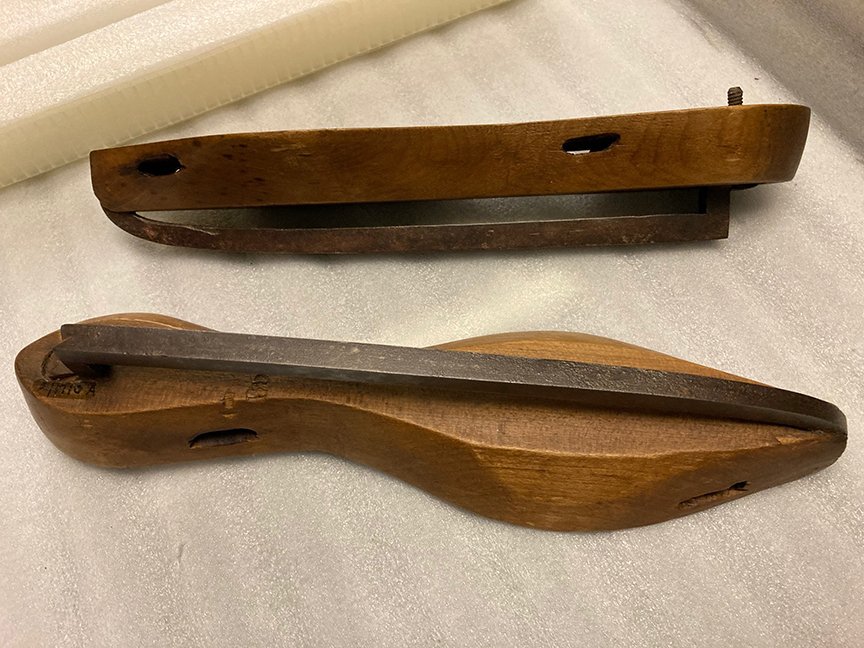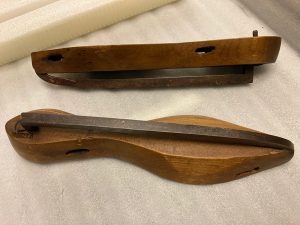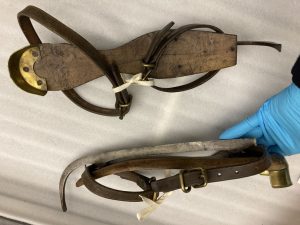As we continue to do research on the skate collection at the Bata Shoe Museum in preparation for the upcoming online exhibition Boots & Blades: The Story of Canadian Figure Skating, we are looking at the blades specifically right now. As the blades are what touch the ice, they are a major component in the art of figure skating, allowing the skater to glide and move in the desired ways.
The skate artefacts in the collection have blades of so many variations. The length varies, as does the curve of the gliding surface an the way the blade is secured to the foot. There are materials of many types: a variety of types of wood and metal. The blades themselves are made of metal generally.
One of the blade features that we are looking at is the cutting surface – the bottom of the blade where the blade connects with the ice surface. Not much is written about this aspect, but it is a vital feature that can allow gliding if the blade is flat, speed if the blade is honed to a slight arc, and precision if the blade is honed to a deeper arc. The deeper arc creates the two edges that figure skating is done on. The two edges are: the inside and the outside edges. Without these two edges, the skater has no purchase, no control, on the ice surface. Skates without edges are called ‘gliders’; literally, these skates allow you to glide on the ice and were most often used with poles, much like ski poles, to help stabilize the skater.
The introduction of edges came later, but exactly when, and in which regions it came to first, is difficult to determine. Not much is written about this technical aspect of skate blades. The development of sharpening the edges into the blade surface began in the 19th century, but little else is know. The proof that we see in the artefacts in the collection is the proof of how skating developed.
The edges create resistance, and in doing that they slow the speed of the skater, but they allow the skater to ‘cut’ into the ice instead of slipping. Shallow edges allow the skater stability, speed and smooth motions. Speed skates, for example, have shallow edges. Deeper edges allow for precise moves including making tracings of curves and circles in the ice. Deeper edges are what figures skaters need.
Suzanne Petersen, Collections Manager











